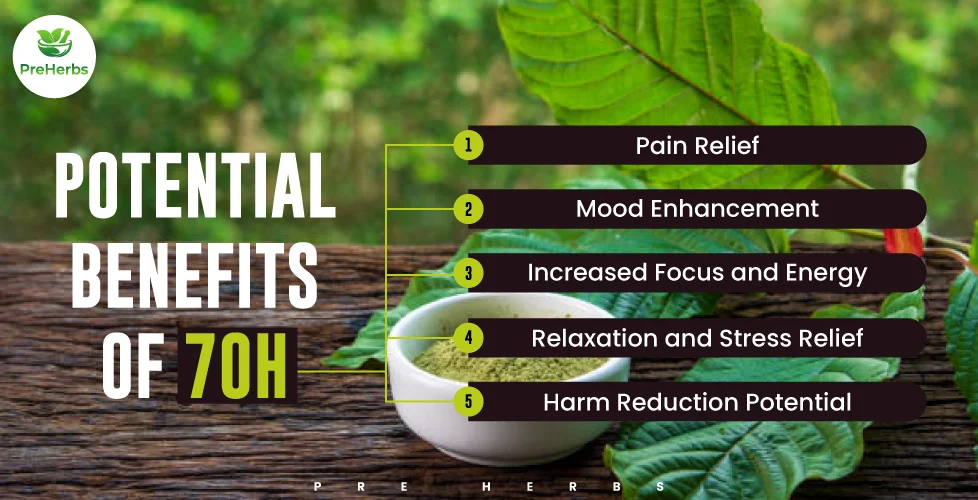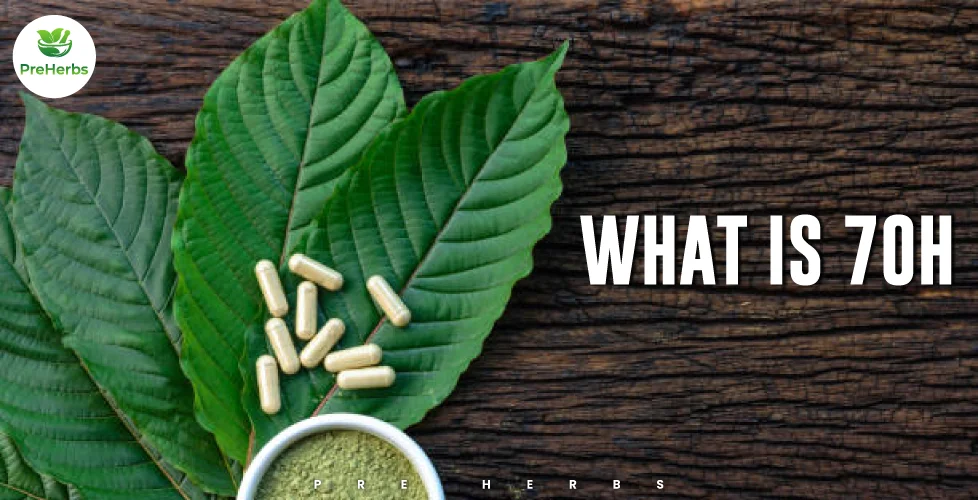When it comes to plant-based supplements and natural wellness, one name that’s creating a lot of curiosity is 7OH. You might be wondering, “What is 7OH, and why do so many people in the wellness community talk about it?” Whether you’ve come across the term while reading about kratom or heard it from health enthusiasts, 7 OH has quickly become a hot topic because of its unique effects and potential benefits.
Often mentioned as 7 oh kratom, this powerful natural compound is gaining attention for its role in mood enhancement, pain relief, and overall well-being. In this article, we’ll break down exactly what 7OH is, how it works, its benefits, uses, and why it’s becoming a key player in natural wellness trends worldwide.
What is 7OH?
To begin, (7-hydroxymitragynine) is a naturally occurring alkaloid found in the leaves of the Mitragyna speciosa tree, more commonly known as Kratom. Native to Southeast Asia — particularly Thailand, Malaysia, and Indonesia — Kratom has been used for centuries for its energizing, pain-relieving, and calming effects.
While Kratom contains dozens of active alkaloids, 7OH is considered one of the most powerful. It’s often discussed under the term 7 oh kratom because this compound is one of the primary drivers of Kratom’s effects.
Read More: Different Types of Kratom: Benefits and Effects
The Origin and Discovery of 7OH
Kratom has been used for centuries in Southeast Asia as a traditional herbal remedy. Farmers and laborers chewed kratom leaves to help with stamina, relief, and relaxation. However, it wasn’t until modern scientific research began that was isolated and studied as a key active compound.
Researchers found that while mitragynine converts into 7OH during the body’s metabolism, kratom leaves also naturally contain trace amounts of 7OH. This makes it both a naturally occurring compound and a metabolite of mitragynine.
The discovery of 7OH helped scientists better understand why kratom has such noticeable effects even though the alkaloid concentrations are relatively small compared to other plants.
How Does It Works?

7OH works by interacting with receptors in the brain and nervous system.
- Receptor Interaction – Binds mainly to the mu-opioid receptor.
- Binding Affinity – Stronger than mitragynine, making it more potent.
- Metabolic Conversion – Mitragynine converts into 7OH in the liver, amplifying effects.
In short, 7OH is the powerhouse alkaloid behind kratom’s effects.
How to Use 7OH
Because 7OH is a naturally occurring alkaloid in kratom, there isn’t a separate “7OH product” most people take directly. Instead, it is consumed through kratom leaves, powders, capsules, or extracts. The way you use kratom determines how much 7OH you’re actually getting.
1. Traditional Use (Chewing or Brewing Leaves)
- In Southeast Asia, fresh kratom leaves are chewed or brewed into tea.
- This provides a natural, low concentration of 7OH alongside mitragynine and other alkaloids.
- Effects are milder and more balanced compared to concentrated extracts.
2. Kratom Powder
- The most common modern form of kratom is dried and ground leaves in powder form.
- Taken as a “toss and wash” method (placing powder in the mouth and washing it down with water) or mixed into drinks.
- Contains natural trace amounts of 7OH, plus mitragynine that converts into 7OH in the body.
3. Capsules
- Many users prefer capsules for convenience and measured dosing.
- Capsules contain pre-measured powder or extract, helping users monitor intake more precisely.
- This is one of the easiest ways to ensure consistency.
4. Extracts and Enhanced Products
- Extracts and resins are concentrated kratom forms with higher levels of 7OH.
- These products can be much stronger than raw powder because the 7OH concentration is elevated.
- Best suited for experienced users who understand potency and want more pronounced effects.
Read More: What Is 7oh Vape? Everything You Need to Know
Dosage Guidelines for 7OH (Through Kratom)
Since there is no official medical guideline for kratom or 7OH use, most advice comes from user experiences and vendor recommendations. Effects vary depending on body weight, tolerance, and sensitivity.
- Low (1–3g): Mild stimulation, focus, mood lift
- Moderate (3–5g): Balanced calming effects
- High (5–8g+): Strong relaxation and sedation
Note: Extracts can be several times more potent, so much smaller amounts are typically used.
Potential Benefits of 7OH

So, why is 7OH and, by extension, 7 oh kratom gaining popularity? Let’s break down the key benefits.
1. Pain Relief
Perhaps the most well-known effect of 7OH is its pain-relieving potential. Users find it effective for both chronic and acute discomfort, making 7 oh kratom an attractive natural alternative to traditional pharmaceuticals.
2. Mood Enhancement
Many people report improved mood and emotional well-being after using 7OH. It can help ease stress and create a sense of balance, which is why it’s popular in wellness communities.
3. Increased Focus and Energy
At lower doses, 7OH can boost concentration and energy levels. For this reason, 7 oh kratom has been traditionally used by laborers in Southeast Asia to fight fatigue during long working hours.
4. Relaxation and Stress Relief
In higher doses, 7OH produces calming, sedative-like effects. This versatility makes 7 oh kratom a unique compound that can support both productivity and relaxation.
5. Harm Reduction Potential
Researchers are exploring whether 7OH may serve as a tool for those transitioning away from opioid dependence. While more research is needed, this potential application has sparked major scientific interest.
Mechanism of (7-Hydroxymitragynine)
The mechanism of action of 7OH is what makes it such a central player in kratom’s overall profile. Although it is only a minor alkaloid in terms of quantity, its potency and receptor interactions set it apart.
1. Receptor Binding
- 7OH binds strongly to the mu-opioid receptors in the brain.
- These receptors are the same ones targeted by many pain-relieving and mood-modulating compounds.
- Compared to mitragynine, 7OH has a significantly higher binding affinity, which means it can trigger stronger responses even in smaller amounts.
2. Metabolic Conversion
- When a person consumes kratom, mitragynine is partially converted into 7OH in the liver.
- This metabolic process boosts the presence of 7OH in the body, amplifying its effects beyond what the raw leaf’s trace amounts provide.
3. Central Nervous System Effects
- Once 7OH interacts with the opioid receptors, it influences neurotransmitter signaling related to pain perception, stress, and mood regulation.
- This is why users often describe feelings of relaxation, comfort, and emotional balance after using kratom products with higher 7OH concentrations.
Read More: Kratom Vapes: A Complete Guide to Benefits, Usage, and Safety
Uses of 7OH
Now that you know what 7OH is, let’s explore how it is used.
Traditional Uses
In Southeast Asia, locals chewed Kratom leaves (rich in 7OH) to combat fatigue, increase productivity, and relieve discomfort. This traditional practice has continued for centuries.
Modern Uses
Today, 7 oh kratom is consumed in many forms, including:
- Powders
- Extracts
- Capsules
- Tablets
These modern products make it easier for users to measure dosage and integrate 7OH into wellness routines.
Importance of 7OH
Understanding the importance of 7OH is crucial for anyone interested in kratom, herbal wellness, or natural alkaloids.
1. Primary Active Alkaloid
Even though mitragynine is more abundant, 7OH is often considered the true driver of kratom’s noticeable effects. Its potency makes it disproportionately impactful relative to its concentration.
2. Key to Kratom’s Popularity
Without 7OH, kratom might not have the same appeal in terms of relaxation, mood enhancement, and stress reduction. Many researchers believe that 7OH is the main reason kratom has gained global attention.
3. Basis for Extracts and Enhanced Products
- Many kratom extracts are designed to increase the concentration of 7OH.
- This allows manufacturers to create products with more powerful and targeted effects.
- However, this also means consumers need to be cautious, since higher 7OH levels can lead to stronger-than-expected outcomes.
4. Scientific and Medical Interest
- Because of its strong interaction with opioid receptors, 7OH is being studied as a potential natural alternative to traditional pain relief compounds.
- Researchers are also investigating whether 7OH could provide similar benefits but with fewer side effects than synthetic opioids.
5. Consumer Awareness
Understanding 7OH helps consumers:
- Make better choices when selecting kratom products.
- Recognize why some strains or extracts feel stronger than others.
- Use kratom more responsibly, with an awareness of potency and dosage.
Effects of 7OH
Like any natural compound, 7OH produces a range of effects depending on the dose and individual biology.
Positive Effects
- Pain relief
- Boosted energy and focus (low doses)
- Improved mood and stress reduction
- Relaxation and calmness (higher doses)
Possible Side Effects
Some users report:
- Nausea
- Constipation
- Dizziness
- Drowsiness
- Risk of tolerance with frequent use
This highlights the importance of responsible consumption of 7 oh kratom.
7OH vs. Other Compounds
Comparing 7OH’s potency and effects with other kratom alkaloids.
| Aspect | 7OH (7-Hydroxymitragynine) | Mitragynine | Opioids |
| Potency | Very strong, active at low dose | Moderate strength | Very strong, higher risks |
| Amount | Small in Kratom leaves | Most abundant alkaloid | Not in Kratom |
| Effects | Pain relief, mood boost, relaxation | Mild pain relief, stimulation | Strong pain relief, sedation |
| Risk | Possible tolerance if overused | Lower risk than 7OH | High risk of dependence |
| Legality | Varies with Kratom laws | Same as Kratom | Strictly controlled |
Read More: Blue Lotus Tea Benefits: Everything You Need to Know About This
Is 7OH Legal?
One common question alongside What is 7OH? is whether it’s legal.
The legal status of 7 oh kratom varies widely. In some countries and U.S. states, Kratom is banned or regulated due to safety concerns. In others, it is available freely as a dietary supplement.
Always check your local regulations before purchasing or using 7OH products.
The Future of 7OH
With its growing popularity and research potential, 7OH is expected to remain at the forefront of discussions around natural wellness. More studies will clarify its medical potential, and regulatory frameworks will likely adapt as understanding deepens.
For now, 7 oh kratom stands as a powerful, natural compound bridging traditional herbal wisdom and modern wellness innovation.
Pros and Cons
Like everything else, this comes with its own set of pros and cons.
Pros
- High potency, effective in small amounts
- Plays a key role in kratom’s overall effects
- Strong mood and stress relief properties
- Naturally converted from mitragynine in the body
- Growing scientific interest for therapeutic use
Cons
- Found in very low natural concentrations
- Higher potency may increase risk of overuse
- Can lead to tolerance or dependence with heavy use
- Legality depends on kratom laws, varies by region
- Lack of extensive long-term research
FAQ’s
Your most common questions about 7OH
1. Is 7OH stronger than morphine?
Yes, research suggests 7OH can be more potent than morphine in binding to opioid receptors.
2. Does 7OH show up on a drug test?
Standard drug tests usually don’t detect 7OH, but specialized tests for kratom may.
3. What does 7-hydroxymitragynine do to your body?
It interacts with opioid receptors to provide pain relief, mood lift, and relaxation.
4. Is kratom as strong as morphine?
Raw kratom isn’t as strong as morphine, but 7OH within it has higher potency.
5. How long does it take 7OH to work?
Effects typically start within 15–30 minutes, depending on the form and dosage.
Final Thoughts
So, what is 7OH? It’s a naturally occurring alkaloid from the Kratom plant with remarkable effects on pain relief, mood, energy, and stress management. Often referred to as 7 oh kratom, this compound represents both tradition and modern exploration in herbal wellness.
While promising, it requires responsible use, awareness of legal status, and more scientific research to confirm its full potential.
If approached carefully, 7OH can be a valuable addition to the growing movement toward natural and plant-based wellness solutions.



